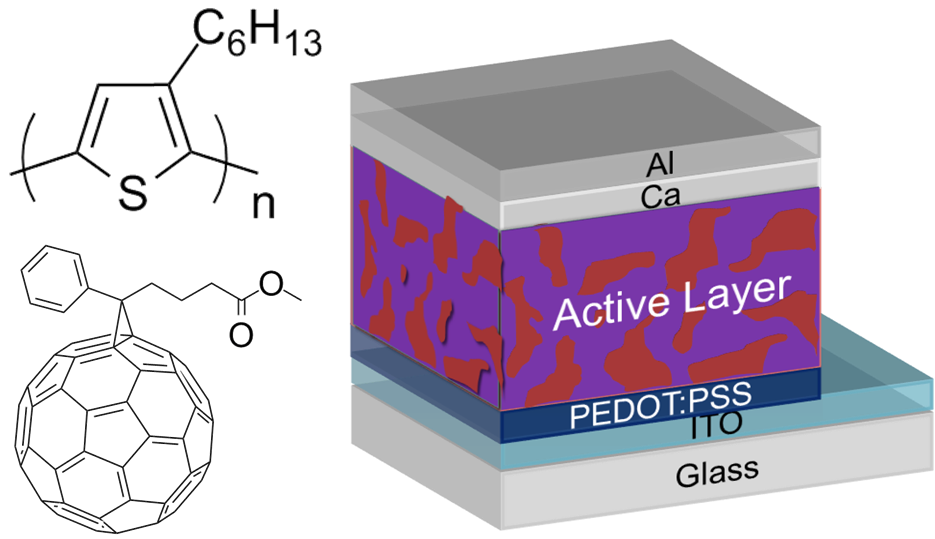P3HT, PCBM and Bulk Heterojunction Device
Organic photovoltaic (OPV) device, which uses organic semiconducting materials as light absorbers and charge transport media, is one of the most promising technologies offering low-cost, non-toxic, light-weight, semi-transparent and flexible solar cells. The power conversion efficiency (PCE) for OPV is still low compared with other solar cell techniques. Nevertheless, it is catching up quickly with efficiency being doubled within the past 5 years. One of the key features is that the electron donor material and acceptor material have to mix together to form bulk heterojunction in order to create more interfacial area for charge separation. Thereby, the control of bulk morphology is critical to device performance.

